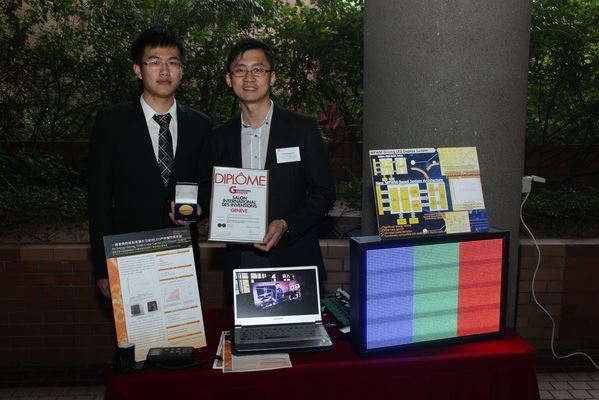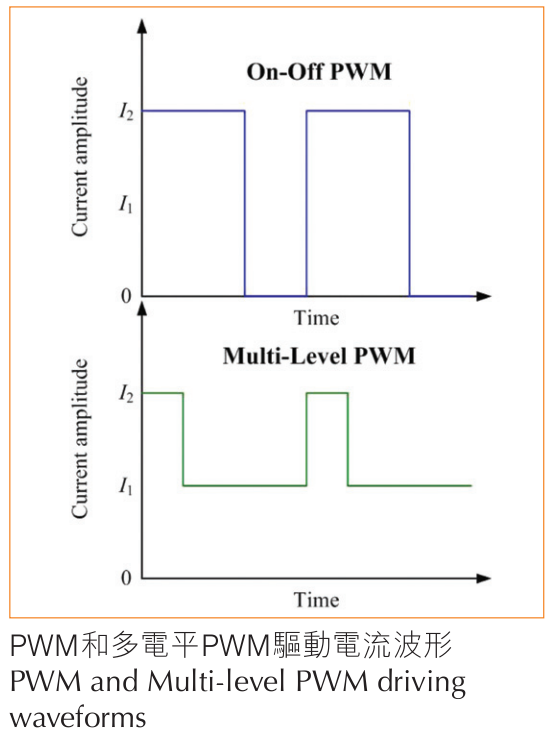Hong Kong Polytechnic University’s (PolyU) Department of Electronic and Information Engineering has recently developed a high efficiency Pulse-Width Modulation (PWM) LED driver that will allow LED lamps to become brighter and more efficient.
This new driver uses an innovative multi-level PMW as a power supply for LEDs. Compared to current PMW and linear drivers, this technology obviously improves light quality and energy efficiency. Not restricted to LED drivers, this technology can also provide more benefits and options than PMW or constant current modules. By adopting conventional PWM methods, the LED receives pulsed Direct Current (DC) instead of DC. The driver’s electric currents switch on and off at a speed so fast that it is undetectable by the human eye. Using pulse DC as a power source also makes it much easier to control light output.

Hong Kong PolyU research team displaying the Gold Medal they won at the 41st International Exhibition of Inventions of Geneva for their multi-level PMW technology. (LEDinside/Hong Kong PolyU) PolyU’s research team that includes Dr. Ka Hong Loo, Dr. Patrick Lai and Professor Michael Tsai changed how PMR works. The pulse DC operation was redesigned to provide maximum light output with minimal thermal dissipation, which resulted in higher lumen efficacy (lm/W). Lai believes the technology can further save 15% of energy. The technology’s energy saving features is more evident in large scale applications, such as New York One Times Square billboard ads. The billboard displays use 12 million lamps that consume 250 kilowatt (KW) of electricity. If the billboard ads are on 16 hours per day, the monthly electricity bill would total US$ 18,000. By saving 12% of energy, US$ 2,160 can be saved each month.

Comparison between PWM and multi-level PWM driving waveforms. (LEDinside/Hong Kong PolyU) Compared to traditional methods, PMW has lower heat dissipation requirements, so a much smaller heat sink is needed. This indicates the size of LED systems can be much smaller. The new PWM drivers also have excellent dimming functions, and allow manufacturers to make LED with full dimming features that can cover 0 watts. These qualities can make brighter, more intelligent and durable LED lighting solutions. According to the Worldwatch Institute, from an environmental perspective, the world is entering the LED era. If all conventional luminaires are replaced with energy saving products, energy consumed by lighting can be lowered by 40%. LED lighting has become the most popular green energy replacement for incandescent lights, but it is not perfect. Consumers need brighter and more natural lighting that resembles incandescent lighting. Brightness demands are stressed in high-power applications, such as automotive Direct Running Lights (DRL) and architectural lighting. Global LED manufacturers are working hard in this field, and multi-level PWM will be an inspiration to industry technology. It is quite evident that better products can be developed with this technology. The products high luminous properties and good heat dissipation protection will help manufacturers develop more compact lighting solutions. Furthermore, it has very high lumens output. Production costs can also be lowered, as all these properties can be achieved through low cost IC. For LED manufacturers this is music to their ears. The technology has already caught the industry’s attention and has received a Gold Medal from the 41st International Exhibition of Inventions of Geneva.





